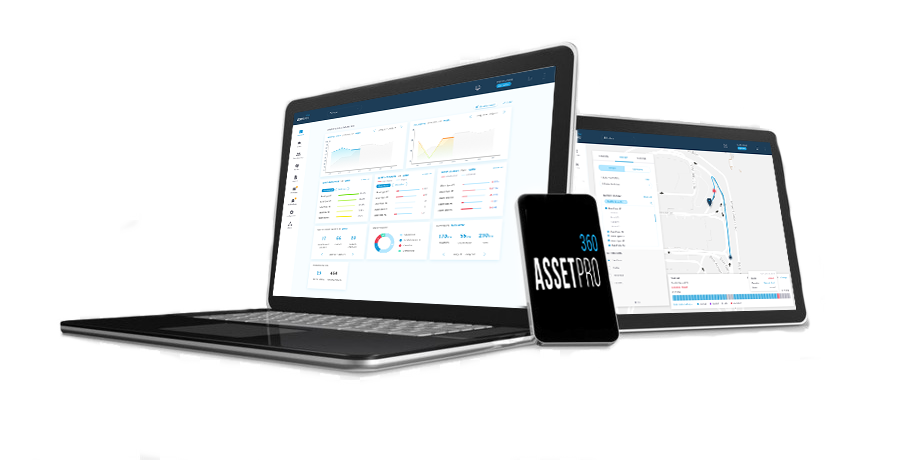How To Increase Forklift Operator Accountability
Perhaps the most important employees in a warehouse or distribution center are the forklift operators. A good, well-trained driver assures safety in the workplace, efficient work performance, and a well-maintained forklift. All of these are essential to warehouse safety, operator safety, and safety and compliance of the company.
The question plaguing fleet management is how to make the operator accountable?
Preparing A Forklift Driver
 A good forklift operator isn’t born; he is made. And to make him, it is the company’s responsibility to train him, assure that he is aware of safety procedures, authenticate that he understands all aspects of the job, and that he handles the forklift responsibly. It is also the responsibility of the company to assure that he receives ongoing training so that he doesn’t lapse into reckless or abusive driving habits.
A good forklift operator isn’t born; he is made. And to make him, it is the company’s responsibility to train him, assure that he is aware of safety procedures, authenticate that he understands all aspects of the job, and that he handles the forklift responsibly. It is also the responsibility of the company to assure that he receives ongoing training so that he doesn’t lapse into reckless or abusive driving habits.
In the past, managing these issues was guesswork. However, with the introduction of digital fleet management, it has become more of a science. Fleet management software has made it possible to gather fleet data involved in how the fleet is being used and maintained, and assists in identifying depreciation, improving efficiency and providing the right kind of data that can be analyzed so that you don’t only know the present condition of the fleet, but its future as well.
Training
The Occupational Safety And Health Administration is the U.S. government agency that is responsible for safe forklift operation. Also known as OSHA, the organization has developed criteria that a forklift operator must satisfy before he can become an OSHA-certified driver. It is up to the fleet manager to know what those criteria are and train the driver so that he complies.
The company can have a designated individual who is assigned to perform the training or it can outsource the task. If the company decides to keep training in-house, then the employee must be a certified trainer who is knowledgeable in the OSHA criteria.
The training process is not finished until the driver shows that he can properly operate the forklift in a safe manner. Only then can he be certified and assigned to drive a lift.
Then More Training…
However, fleet management should not operate on the premise that once a driver has been initially trained and certified that he will always drive a lift safely. It is essential for fleet management to follow up with re-training and re-certification. A good training program should include a schedule that designates how much time can pass before a driver is re-trained and re-certified.
Certain telematics devices can even notify a fleet manager if a driver has started to drive recklessly by monitoring for sharp turns, impacts, excessive loads and more. If the problems persist, that could be a sign that the operator may be in need of additional training.
Safety Checklists

Once the training has been performed and the driver is certified, then fleet management should provide him with a safety checklist he can follow each time he prepares to drive a forklift. The checklist should detail how the driver should check out the lift before using to determine if it is safe to drive. Some sophisticated telematics devices can even lock down a lift until the checklist is fully completed and cleared to use. This ensures that the checklist is completed each and every time a vehicle is operated.
Safe operation of a forklift should also include proper maintenance. The responsibility of maintaining the lift goes both to fleet management and forklift operators. A good safety checklist will include maintenance questions as well. This will assure that the driver never operates a lift that hasn’t been maintained and fleet managers can schedule the vehicle for maintenance so that it will continue to be safe to use and run properly.
Monitoring The Forklift And Driver
Most fleet managers know that telematics can be key in increasing productivity but there are also telematics products available that have features designed specifically to assist them with ensuring safety in the workplace.
There are devices that warn a forklift driver that a pedestrian is in its path to avoiding forklift-pedestrian accidents. As mentioned before, there are also telematics devices that track how the forklift is being operated. This alerts fleet management when forklift drivers are lapsing into bad driving behavior including reckless driving, impacts, sharp turns, and even whether the lift is carrying excessive loads. Telematics also provide data showing how efficient the forklift is being used and alerts fleet management to problems so that they can make operational changes to assure more efficient use.
Monitoring is only half of the equation though. A robust telematics system should also be able to send instant alerts to fleet management to follow up with specific drivers that could be exhibiting reckless behavior so that fleet management can determine whether re-training is necessary. Having visibility over each operator from any location provides the accountability drivers need to adhere to safe driving behaviors. This assures safety and compliance with OSHA regulations, warehouse safety and operator safety.
There are telematics devices that monitor aspects of the forklift to assure that it is properly maintained. If you have electric forklifts in your fleet, there are even devices that alert the driver and fleet management that the battery has problems that must be attended to.
Access Control Group offers telematics devices that offer all of the above features and even integrate with a digital fleet management software, AssetPro 360, to assure safe operation and appropriate maintenance.
Access offers simple yet powerful devices that track a lift’s usage, offers automatic engine shut off, battery water monitoring, hour meters, GPS tracking all through Wi-Fi or cellular connectivity.
If safety is the goal, Access offers an affordable, feature-rich telematics system that verifies forklift operator authentication, monitors impact and sharp turns of forklifts, offers OSHA compliance safety checklists, excessive idle time engine shutdown, fleet usage monitoring and optimization suggestions, and two-way text messaging.
All these devices are designed to assure that the forklift operator is held accountable.
Safety, accountability, efficiency! All of this is achievable using Access Control Group’s telematics products and fleet management systems.
